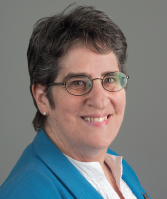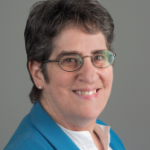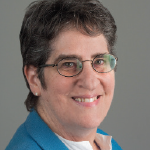 SAN DIEGO—In many ways, publications are the currency of academic medicine and research careers. Often, physician-scientists need guidance on how to ensure their work is featured in prominent journals and other venues. At the ACR Convergence 2023 session titled, The World is Your Oyster: Publishing Pearls from Editors, a panel of experts shed light on how to be successful in publishing and editing in the field of rheumatology and beyond.
SAN DIEGO—In many ways, publications are the currency of academic medicine and research careers. Often, physician-scientists need guidance on how to ensure their work is featured in prominent journals and other venues. At the ACR Convergence 2023 session titled, The World is Your Oyster: Publishing Pearls from Editors, a panel of experts shed light on how to be successful in publishing and editing in the field of rheumatology and beyond.

Dr. Hannan
Reach Out
Marian Hannan, DSc, MPH, professor of medicine at Harvard Medical School and senior scientist at the Marcus Institute for Aging Research, Boston, served as editor-in-chief of the journal Arthritis Care & Research for 10 years. In this role, Dr. Hannan found joy in working with authors to find a home for their articles—whether with Arthritis Care & Research or a different journal.
Dr. Hannan noted that authors can contact the editor of a journal about a submission, and most journals list editors’ contact information on their websites. It may be helpful to reach out because editors can advise an author on how a proposed article may be received by reviewers. If an article is not a good fit for a particular journal or if it’s proposed at the wrong time—such as when a similar article has already been accepted for publication—the editor may be able to advise the author on a more suitable publication.
As a rule, editors are looking for manuscripts that address important knowledge gaps, are informative to readers, are novel and honest with regard to strengths and limitations and will appeal to the journal’s readership. Know one’s audience was a key piece of advice during the panel discussion. Frequently, authors select a journal based on its impact, which may not be ideal. Dr. Hannan’s advice: Choose the journal or periodical that best aligns with your topic and will give you the timeliest review.
Authors may feel discouraged when they receive an immediate rejection of their work, but this does not necessarily mean the work is of low quality. It may be rejected due to its poor fit with the journal or because the journal has recently published a manuscript on the same topic.

Dr. Seo
Keep Working
Next, Philip Seo, MD, MHS, deputy editor of rheumatology for UpToDate and associate professor of medicine, Johns Hopkins University School of Medicine, Baltimore, expanded on this topic, discussing articles that have been difficult to get published. Dr. Seo advised authors not give up on these articles; rather, authors may need to re-conceptualize the paper and reorganize how the research is presented. Doing so may require more time and effort, but this can be worthwhile in ensuring the results of a research study ultimately reach readers.
As former physician editor of The Rheumatologist, Dr. Seo discussed his unique experience and how that role spurred him to think in innovative ways about what practicing rheumatologists and rheumatology professionals want to read monthly. He said that it was joyful for him to read articles in which authors expressed their opinions on timely subjects, analyzed healthcare policy and the realities of medical practice and shared personal anecdotes or experiences. Additionally, he encouraged students, fellows-in-training and others who may be early in their careers to submit to periodicals like The Rheumatologist because it’s a wonderful way to engage with a wider audience and learn to communicate information in a compelling fashion.
Co-Authorship
Marcy Bolster, MD, professor of medicine at Harvard Medical School and director, Massachusetts General Hospital Rheumatology Fellowship Training Program, Boston, reflected on her experience as an editor for a series of patient education books and for an interdisciplinary textbook that will soon be published.
She provided extremely useful advice, including how to successfully manage co-authorship of an article. Dr. Bolster recommends that authors start with an outline to use as guidance for the group, set up a timeline of activities and stick to this schedule. Determine if all authors will contribute written content or if one or two authors will provide the content while others supply suggestions and edits. If there are multiple content contributors, then the group should ensure that everyone is aware of article word count limitations. Also, create a good process for keeping track of references.
Weaving together the final manuscript can be challenging because it will combine many different writing styles and may lack cohesiveness. Thus, one person should be assigned this task at the beginning. Co-authors should also agree on authorship order at the onset of the project. This subject can be sensitive, and Dr. Bolster recommends being diplomatic and respectful to one another throughout the process.
Textbooks: Dr. Bolster discussed her unique experience as a textbook editor, which has provided her with the opportunity to learn new medical content, observe different styles of practice and appreciate the art of medicine. Being an editor lends one the chance to be creative in developing a product that will be used and referenced by a sizable audience.
The process of ensuring a textbook comes to fruition is less daunting than it may seem. If you have an idea for a book, begin by outlining the scope of proposed chapters and identifying potential contributing authors for each topic, then approach a book publisher with the proposal. The book proposal form itself is usually a simple document that can be easily completed and submitted to the publisher for review. Also, don’t be afraid to use your professional networks to connect with publishers and recruit talented co-authors after the book is approved.
Pearls for Editors
Jay Liebowitz, DSc, most recently the inaugural Executive-in-Residence for Public Service at Columbia University, N.Y., used his experience as an editor and author to share wisdom on several important topics. Dr. Liebowitz is the founding editor-in-chief of Expert Systems with Applications: An International Journal and has been the editor or author of nearly 50 books.
When serving as an editor for a book, always provide clear guidelines to authors at the outset of a project. Many publishers have specific stipulations for how to properly format references and how many figures can be included in the book. Co-authors should be made aware of these details early in the process. Also, authors of different chapters may need to stay in touch with one another to prevent duplicative content.
Another key pearl: Always have a back-up plan, Dr. Liebowitz said. This advice applies both to authors, who may experience events in their professional or personal lives that derail the schedule, and to editors, who must anticipate that one or more authors may ultimately fail to deliver on the finished product. Equanimity, professionalism and good communication, he noted, are key traits that editors must cultivate over time.
The discussion was moderated by Max Konig, MD, assistant professor of medicine, Johns Hopkins School of Medicine, Baltimore, and Andrea Fava, MD, assistant professor of medicine, Johns Hopkins School of Medicine, Baltimore, both of whom are well published themselves. They both noted that they learned new things from the discussion. Dr. Konig and Dr. Fava led the session with poise and thoughtfulness and the audience walked away with a greater understanding of how to achieve success in their own careers.
Jason Liebowitz, MD, is an assistant professor of medicine in the Division of Rheumatology at Columbia University Vagelos College of Physicians and Surgeons, New York.


